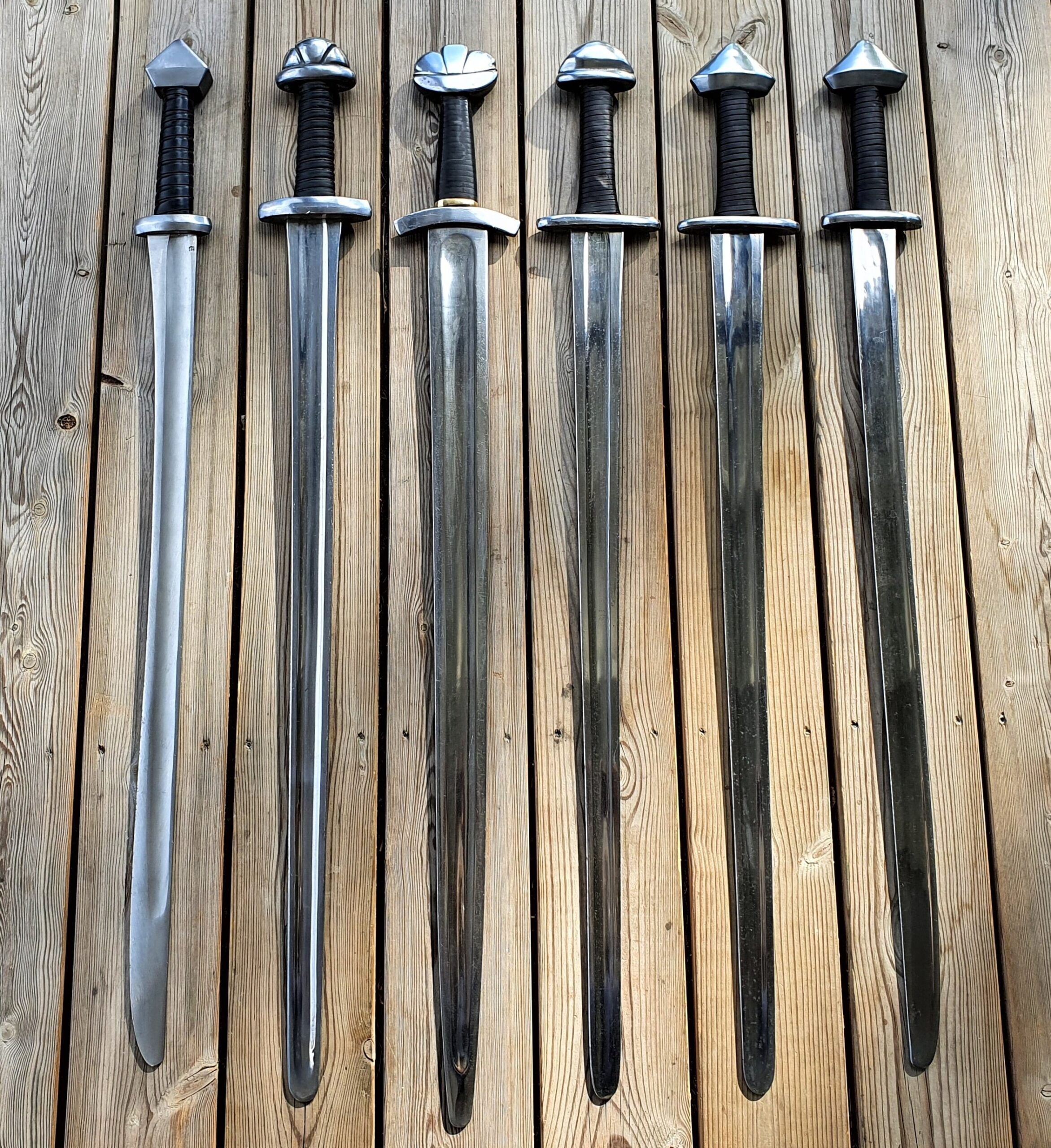Viking swords, known for their craftsmanship and historical significance, are a fascinating subject. Here are some intriguing facts about Viking swords:
- Design and Structure: Viking swords typically had double-edged blades, about 70-80 cm (28-32 inches) long, with a single-handed hilt. The blades were often pattern-welded, a technique that involved forging different types of metal together to create a strong and flexible blade with intricate patterns.
- Ulfberht Swords: Some of the most famous Viking swords are the Ulfberht swords, known for their superior quality. These swords bore an inscription that read “+ULFBERH+T”, and they were made from high-carbon steel that was unusually pure for the time, suggesting advanced metallurgical techniques.
- Hilt and Guard: The hilt of a Viking sword usually had a cross-guard and a pommel. The guards were often short, around 7-15 cm (3-6 inches), and the pommels were large and elaborately decorated. The hilts were sometimes wrapped with leather or other materials to provide a better grip.
- Decoration: Viking swords were often elaborately decorated with silver, gold, and copper inlays, as well as intricate carvings and engravings. The decorations were not just for show; they also indicated the sword’s value and the status of its owner.
- Materials: The best Viking swords were made from high-quality steel, but earlier and less expensive swords were made from iron. The process of pattern welding combined layers of iron and steel to produce a blade with both flexibility and strength.
- Usage: Viking swords were primarily used for slashing due to their design, but they were also effective for thrusting. The swords were often wielded alongside a shield and were a symbol of power and status among the Viking warriors.
- Symbolism: Swords were not just weapons; they held significant symbolic value. They were often passed down through generations, buried with their owners, or given as gifts to signify alliances and loyalty.
- Archaeological Finds: Many Viking swords have been found in burial sites, often alongside other weapons and grave goods. These finds provide valuable insights into Viking culture, craftsmanship, and trade networks, as some swords were made from materials not native to Scandinavia.
- Myth and Legend: Viking swords feature prominently in Norse mythology and sagas. Legendary swords, such as those belonging to heroes and gods, were often endowed with magical properties and played crucial roles in epic tales.
- Technological Influence: The technology and craftsmanship of Viking swords influenced European sword-making for centuries. Techniques like pattern welding were passed down and refined, contributing to the development of medieval swords.
- Cultural Exchange: Viking swords often incorporated elements from different cultures, reflecting the Vikings’ extensive trade and raids across Europe and beyond. This cultural exchange enriched the design and technology of their weaponry.
